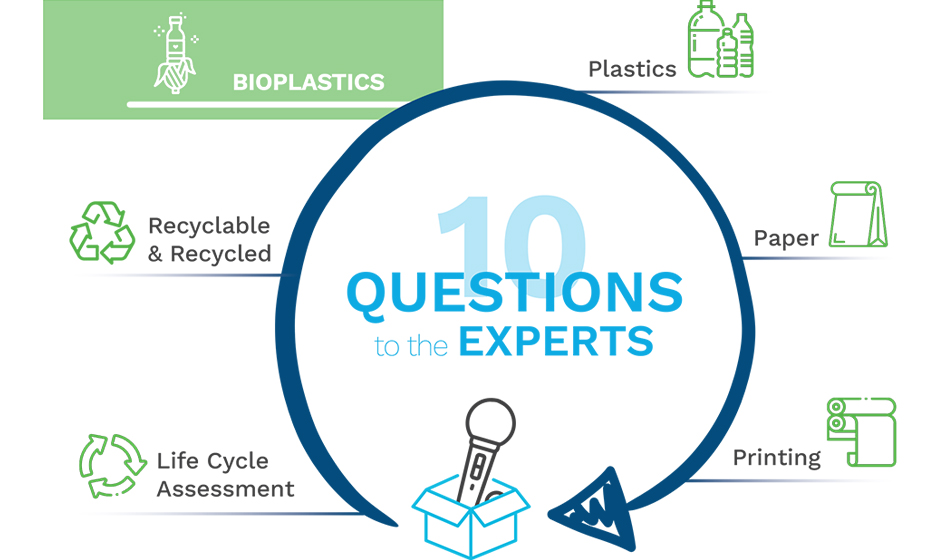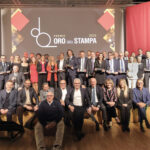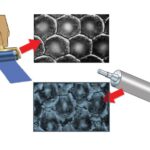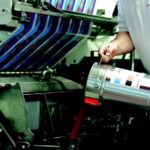… because they are organic, friendly to the environment and, increasingly, to industry as well. Characteristics, functions and limits of a category of materials that is being looked at with great attention.
Alternative plastics, bioplastics, green plastics, natural plastics, … there are many terms used to describe packaging materials with functional and aesthetic properties comparable to those of “traditional” plastics of fossil origin BUT with a more limited impact on the environment, especially at the end of their life cycle. With the proliferation of names, confusion has increased, even in professional circles that, now more than ever, need clarity. That’s why I put my 10 questions to Luca Bianconi, president of Assobioplastiche, who helps us understand what these pastiches are, why they are organic and what their current prerogatives are. And also to shed light on some hot topics, such as their safety in terms of health, the possible impact on the food chain, the regulatory system.
What are bioplastics?
The term “bioplastics” simplistically indicates a plurality of polymers that are very different from each other in terms of raw material used and end of life. A diversity so pronounced that a linguistic simplification often leads to much confusion precisely because of the prefix -bio. For example, European Bioplastic defines it as a type of plastic that can derive (partially or entirely) from biomass and be biodegradable, or derive (partially or entirely) from non-renewable raw materials and be biodegradable. Assobioplastiche, on the other hand, for bioplastics means that material and that manufactured product, whether from renewable sources or of fossil origin, which has the characteristic of being biodegradable and compostable. In this case, the term clearly indicates those products that at the end of their life guarantee certified organic recyclability in various environments (e.g. composting, anaerobic digestion).
What do biodegradability and compostability mean?
Biodegradability is the ability of organic substances and materials to be degraded into simpler substances through the enzymatic activity of microorganisms. Compostability is the ability of a product or packaging to be transformed into compost through the process of composting at dedicated industrial facilities. The property of compostability is defined and verified by the UNI EN 13432:2002 standard, which lists the characteristics that a product must possess in order to be defined as compostable.
Are bioplastics recyclable?
The recycling circuit of compostable bioplastics is that of domestic wet waste and it is in this context that the added value, also environmental, of these products should be framed. In this case, we are talking about organic recycling. The Association since its inception, then since 2011, has fought for bioplastics used in consumer products and packaging to be compostable, so as to indicate clearly and reliably to the citizen the circuit of separate collection (to be conferred together with the organic fraction) and recycling (at composting plants and anaerobic digestion).
If they are derived from renewable resources, perhaps agrochemicals, do they have an impact on the soil and consequently on the food chain?
European Bioplastic reminds us that the cultivation of food, feed and pasture accounts for about 97% of the global agricultural area, while biomass grown for industrial purposes accounts for about 2% and only about 0.01% is now attributable to bioplastics. On the other hand, if we refer to microplastic pollution, there are some studies that have analyzed compost produced in plants where compostable plastics were used as input, and demonstrated the absence of microplastics.
Finally, with regard to the contribution to the formation of compost, a useful agricultural soil conditioner with beneficial effects on the soil, biodegradable compostable plastic is to all intents and purposes a source of carbon and energy with a rate of biodegradation intermediate between simple molecules (e.g. sugars, organic acids) and lignin: for the uninitiated, this means that it has a precise role in the process that leads to the production of quality compost useful, as already pointed out, to maintain organic matter in the soil.
Why and on what basis are they to be considered more sustainable?
The environmental benefits connected to the use of biodegradable and compostable bioplastics are many and range from the renewability of raw materials to the guarantee of the quality of the humid fraction and, therefore, of the compost to be used as a soil conditioner.
The sustainable supply of raw materials is a prerequisite for more sustainable products. Many of European Bioplastic’s documentary sources show that the commitment to traceability along the supply chain, in order to avoid negative impacts such as deforestation and bad agricultural practices, is a widespread practice. For example, many companies apply the ISCC standard, a sustainability certification system linked to the Sustainable Development Goals (SDGs) of the United Nations 2030 Agenda and, in particular, Goal 12, aimed at ensuring sustainable patterns of production and consumption.
Is there a technological limitation to the use of bioplastics?
The bioplastics supply chain is relatively young and research and development for new, increasingly high-performance applications is a daily commitment on the part of companies that are betting on the sustainability of these materials. Therefore, there are still great margins for improvement.
As regards, however, the end-of-life Italy boasts a consolidated system of treatment of organic flows, guaranteeing their recovery at dedicated composting and anaerobic digestion plants. Some of them have not yet modernized adopting the technologies capable of enhancing not only the energy recovery, i.e. the biogas component, but also the digestate component to obtain quality compost. In this case, the technologies are already available, but the authorization process of adaptation is more complicated due to the known problems that affect the management of waste in Italy.
How should the sustainability of bioplastics be combined with safety in food contact applications or in cosmetics, for example?
The use of bioplastics in the various sectors is subject to all the necessary analyses and verifications for the safety of consumers, whatever the use, just like traditional plastics and other materials used for food contact. Therefore, in our opinion, this is not a problem. On the contrary, their use responds to the resolution of some criticalities of food contact applications by allowing their organic recycling together with food residues.
Can their use with paper materials be defined as a “good match”?
In our opinion, absolutely yes, considering the entire life cycle of the products. Let’s think of the so-called “polyacoplates”: if they enter the circuit of paper collection and recycling, bioplastics do not create any problem like traditional plastics; if they enter the circuit of organic material collection and recycling, since they are certified compostable according to EN 13432, they guarantee the same behavior in the plant since, as highlighted above, they have the same characteristics in terms of biodegradability.
In Italy we boast a great experience and know-how at world level combined with the existence of Assobioplastiche and also with the recent creation of the Biorepack consortium. What are the objectives and advantages?
Being at the forefront in the collection and recovery of organic waste has undoubtedly contributed to the development of the bioplastics sector, which without this valorization circuit would remain biobased plastics but would lose those benefits in terms of reduction of the environmental footprint guaranteed by organic recycling. Italy also boasts the first European Extended Producer Responsibility (EPR) system dedicated to EN 13432-certified biodegradable and compostable plastic packaging: the BIOREPACK Consortium. The advantage of having a recognized EPR system is that the supply chain can thus contribute in a transparent and consistent way to the green and circular transition, playing a decisive role in what Italian legislation defines as “shared responsibility”.
What is the future outlook at regulatory and market level?
As for all production sectors, we are experiencing a period of great uncertainty in terms of supply of raw materials and increases in the costs of both granules and energy. On the regulatory side, on the other hand, we are waiting to see the developments regarding the Italian transposition of the European directive on single-use plastics: we hope that the European Commission will accept our government’s response to the opinion of December 2021 and accept Italy’s position that allows the use of biodegradable and compostable single-use products.
Who is Luca Bianconi
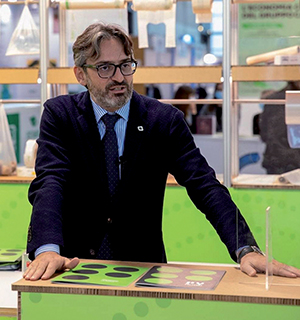 President of Assobioplastiche, since 1995 he has been the owner of Polycart, a company active in the production of flexible packaging in compostable plastic and biodegradable materials. In Polycart he led the process of reconversion of the production with the use of biodegradable and compostable materials destined to the GDO and with the development of special films for packaging, innovative compostable, destined to different sectors and industrial and food contact applications. In 2019 he creates the newco BioPlastic Recycling that deals with recovery and valorization of by-products. Since 2012 he is a member of the Board of Directors of Assobioplastiche where he holds the position of treasurer until 2021 when he is elected president of the Association. Assobioplastiche, Italian Association of biodegradable and compostable materials, was established in 2011 and represents companies operating in Italy and abroad in the production of biodegradable polymers and finished products and in the management of the end of life of products made with bioplastics.
President of Assobioplastiche, since 1995 he has been the owner of Polycart, a company active in the production of flexible packaging in compostable plastic and biodegradable materials. In Polycart he led the process of reconversion of the production with the use of biodegradable and compostable materials destined to the GDO and with the development of special films for packaging, innovative compostable, destined to different sectors and industrial and food contact applications. In 2019 he creates the newco BioPlastic Recycling that deals with recovery and valorization of by-products. Since 2012 he is a member of the Board of Directors of Assobioplastiche where he holds the position of treasurer until 2021 when he is elected president of the Association. Assobioplastiche, Italian Association of biodegradable and compostable materials, was established in 2011 and represents companies operating in Italy and abroad in the production of biodegradable polymers and finished products and in the management of the end of life of products made with bioplastics.

